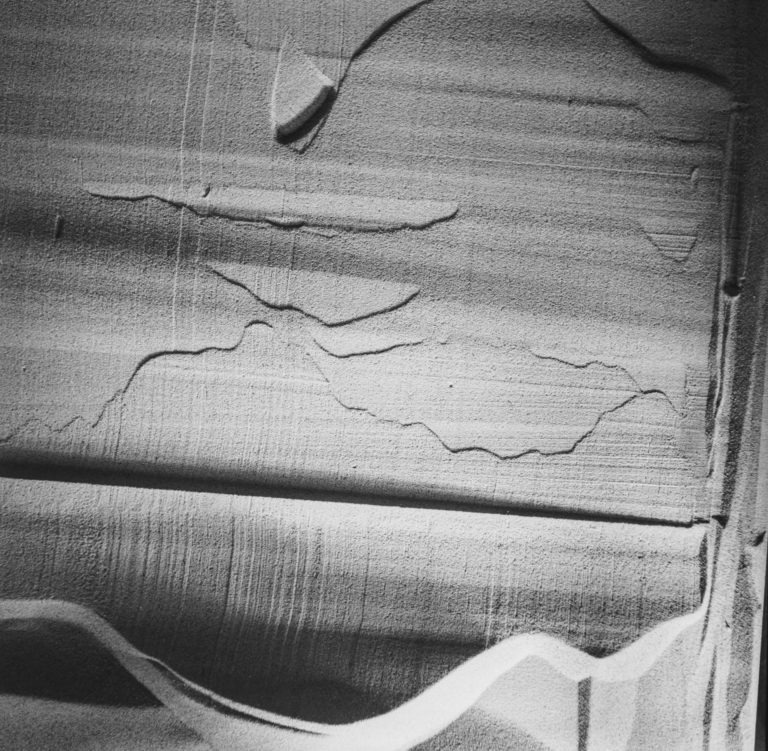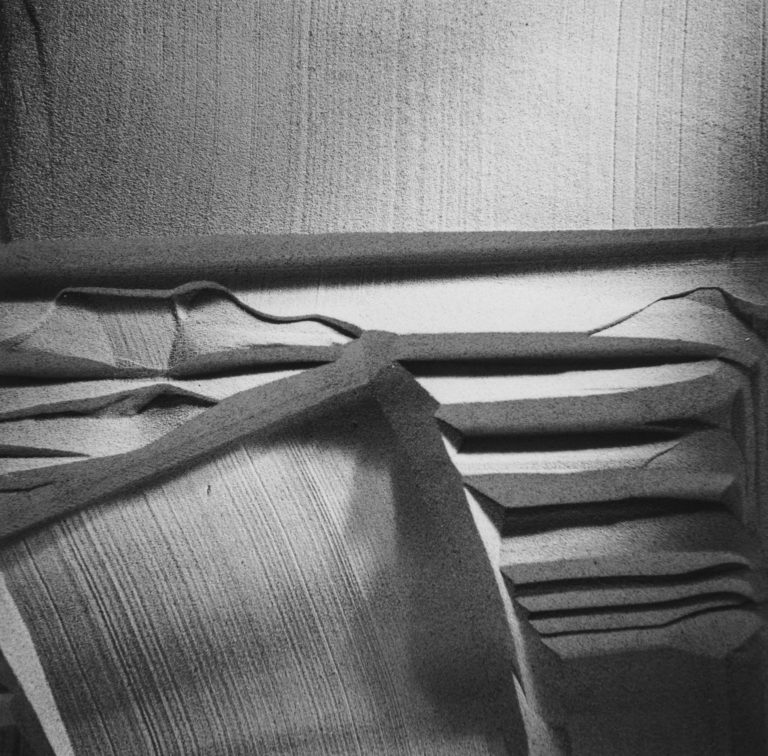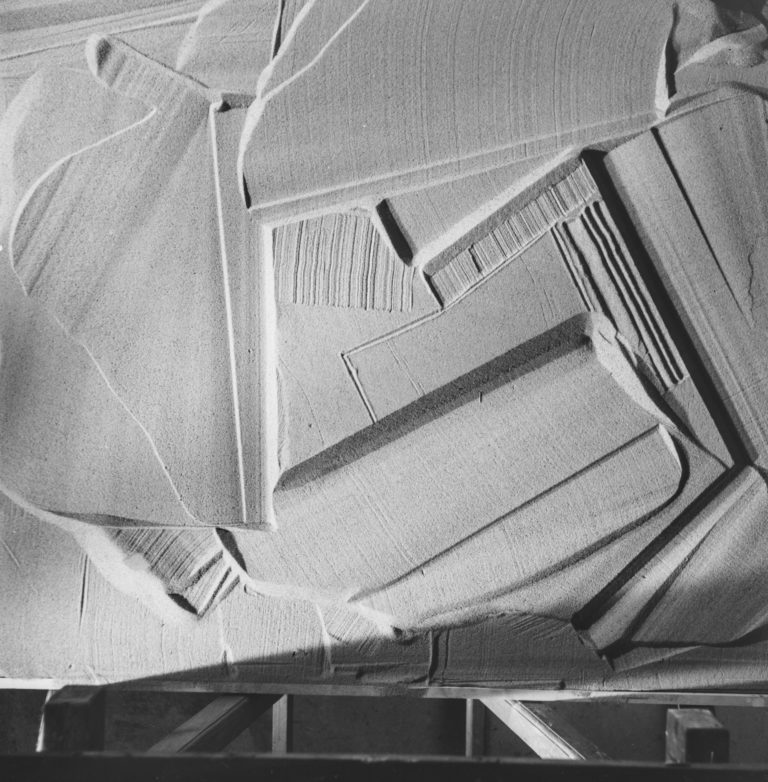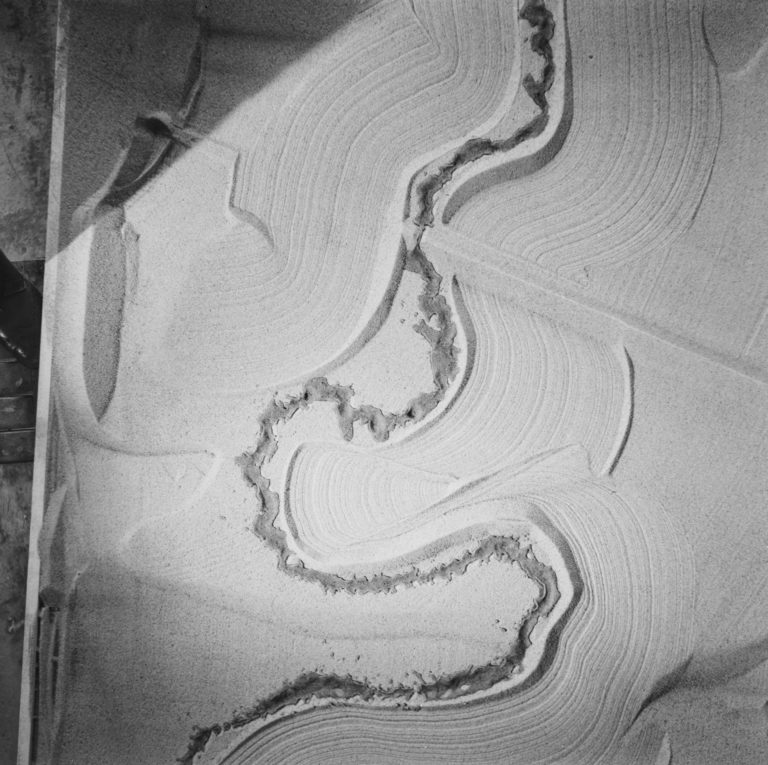Sands, 1968, photography
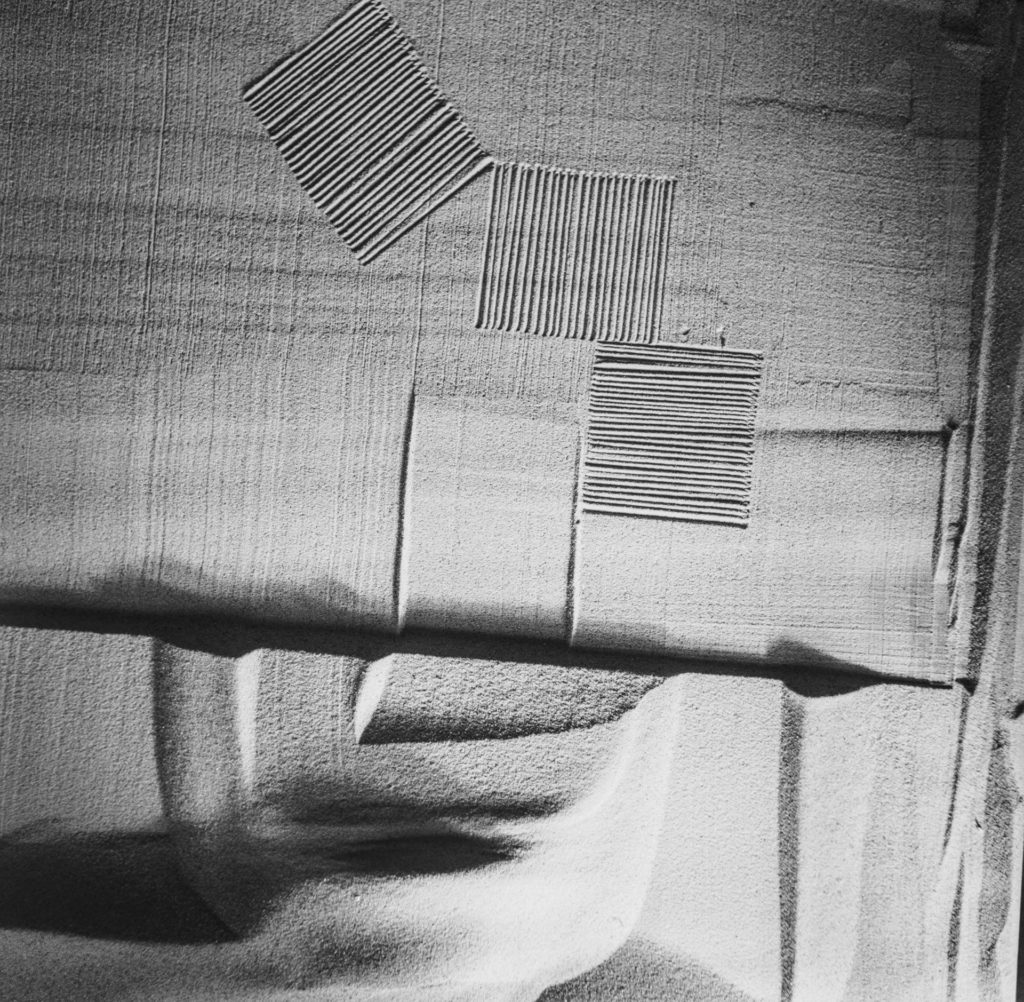
It was a small surface, about four square metres of dry yellow sand. I was
able to move freely around it, view it from above and from aside, illuminate
it with reflectors from different directions, imagine as a model of a wide
expanse or as a small area where a handful of sand means just a handful of
sand.
Dry sand is an extraordinary material for a sculptor — plastic, easy
to shape, tickling your fingers when trickling down your hands — and
it always trickles down. It is a physical property of sand that it tends
downward.
For a sculptor who erects his sculptures, this is a bad material, just as it
is for an architect working on a model of an actual area.
For me, it was a fine material and the only one because I was interested
in a sculpture left in an unreal terrain, viewed from above and from aside,
illuminated with unreal suns. The sculpture of a perfect terrain in which if
a man found himself . . .
‘Krajobraz fantastyczny’, Projekt, no. 4, 1969, pp. 52–54
